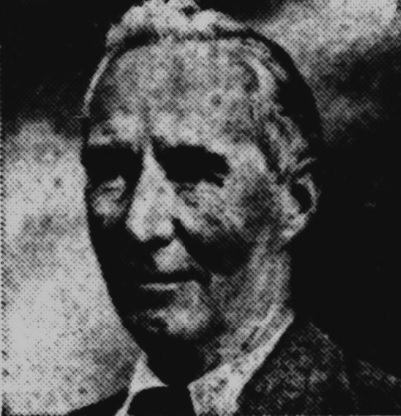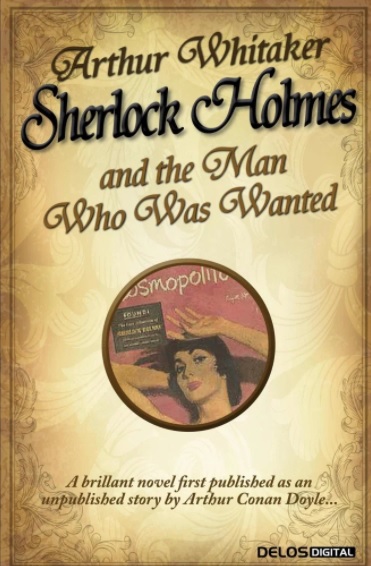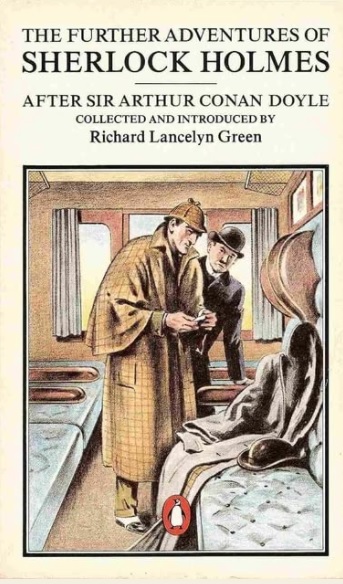
This might have been called ‘Arthur Conan Doyle’s Last Case,’ except it was one which that great writer left to others to solve and involved a story with Sheffield connections.
Arthur Conan Doyle died in 1930 and several documents, unused typescripts, and odd papers, were placed in a deed box by Lady Conan Doyle. Among them were some typewritten pages headed, ‘The Man Who Was Wanted,’ recounting a hitherto unrelated adventure of the great Sherlock Holmes.
Reference was made to it by Hesketh Pearson, a biographer of Conan Doyle, and the revelation caused a literary stir. People clamoured for its publication, American and British editors approached the Conan Doyle family, and tempting prices were mentioned. But the family were unwilling to sell at the time.
Some years later, the American Cosmopolitan magazine acquired the right to print the story in the United States, and in Britain, shortly after Christmas 1948, it was published by the Sunday Dispatch.
It prompted a letter to the Conan Doyle family from Arthur Whitaker, a slim, grey-haired man, who was living in Longridge, near Stroud, and spent his days collecting ornithology reports from bird-watchers in Gloucestershire.
“You know that story called ‘The Man Who Was Wanted,’ which appeared in an American magazine and in the Sunday Dispatch? Well, I wrote it. I don’t want any money or publicity, of course, but I just thought you’d like to know, that’s all.”
It caused upset in the Conan Doyle family and a solicitor began to investigate the claim. He interviewed Whitaker, examined a letter from Arthur Conan Doyle, and saw that he had an exact carbon copy of ‘The Man Who Was Wanted.’
“It is quite simple, really,” said Mr Whitaker. “In 1911 I was a young architect, married, and living in Barnsley. I thought I might earn a little more money by writing detective stories, so I wrote five or six. One was called ‘The Man Who Was Wanted.’ I sent it to Arthur Conan Doyle, asking him whether he ever collaborated in story-writing, and if he would like to collaborate with me.
“He replied that the story was not bad, but that he did not collaborate; he sometimes paid ten guineas, however, for an idea which he later worked up in his own way. He advised me to change the names in the story and get it published myself. However, I accepted the ten guineas, and he retained the typescript. That’s all there is to it, really.”
Because the typescript was unsolicited, the Conan Doyle family had retained it but held back on publication believing it was not up to the great man’s standards. However, Arthur Conan Doyle’s son, Denis, had eventually allowed publication with a note to that effect, and adding that the family had at last yielded to public pressure and had allowed it to be printed.

And the Sheffield Connection? I quote from the pages of ‘The Man Who Was Wanted.’
“Holmes picked up a telegram from the table and looked at it thoughtfully. “If only the inquiry this refers to promised to be of anything like the interest of some we have gone into together, nothing would have delighted me more than to have persuaded you to throw your lot in with mine for a time; but really I’m afraid to do so, for it sounds a particularly commonplace affair,” and he crumpled the paper into a ball and tossed it over to me.
“I smoothed it out and read: “To Holmes, 221B Baker Street, London, S.W. Please come to Sheffield at once to inquire into case of forgery. Jervis, Manager British Consolidated Bank.”
“It appears that a gentleman named Mr. Jabez Booth, who resides at Broomhill, Sheffield, and has been an employee since January I88I, at the British Consolidated Bank in Sheffield, yesterday succeeded in cashing quite a number of cleverly forged cheques at twelve of the principal banks in the city and absconding with the proceeds.”
The Conan Doyle family returned the money it received from the Sunday Dispatch and the newspaper forwarded it to Arthur Whitaker to help him support his seriously wife.
The story itself eventually appeared in ‘The Further Adventures of Sherlock Holmes: After Sir Arthur Conan Doyle.’ It was credited to Arthur Whitaker and retitled ‘The Adventure of the Sheffield Banker.’


© 2021 David Poole. All Rights Reserved.